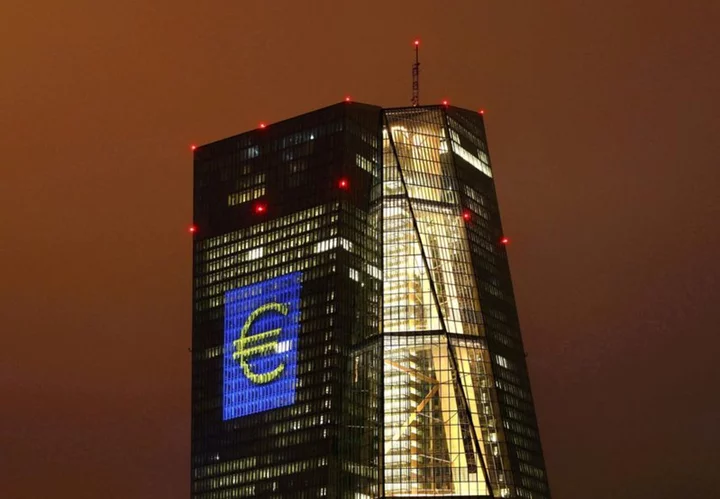(Reuters) -Euro zone bank lending slowed in May as a record series of European Central Bank rate hikes work their way through the financial sector, though the data is unlikely to dissuade policymakers from further tightening.
The ECB has been raising interest rates at the fastest pace on record over the past year to combat stubborn inflation, weakening demand for bank credit and slowing everything from the housing market to construction and consumer spending.
Lending growth to businesses in the 20-nation currency bloc dipped to 4.0% in May from 4.6% a month earlier, while household credit growth slowed to 2.1% from 2.5%, its lowest level since the end of 2016, ECB data showed.
The ECB is raising rates in the hope of slowing demand just enough to ease price pressures and cut inflation from over 6% back to its 2% target.
The transmission of higher rates to bank rates has been quick and lending is clearly impacted but the hit to overall demand has been more muted, leading some policymakers to question if rates hikes still work the same way as in the past.
For now, the weak lending figures will not change ECB plans to raise rates in July and possibly beyond, economists said.
"The fast-paced rate hikes are set to still have a further dampening effect on economic activity as monetary transmission continues to work its way through the system," ING economist Bert Colijn said.
"Still, today's numbers do not show a cliff-edge drop that would change the ECB's thinking on further rate hikes."
The ECB's 3.5% deposit rate is almost certain to rise to 3.75% in July and markets see another move to 4% in either September or October.
May's flow of fresh loans to businesses was a mere 3 billion euros, a relatively modest figure but above the negative readings recorded in most months so far this year.
Growth in the M3 measure of money circulating in the euro zone fell to 1.4% from 1.9%, coming just below expectations for 1.5% in a Reuters survey.
(Reporting by Balazs KoranyiEditing by Francesco Canepa snd John Stonestreet)

